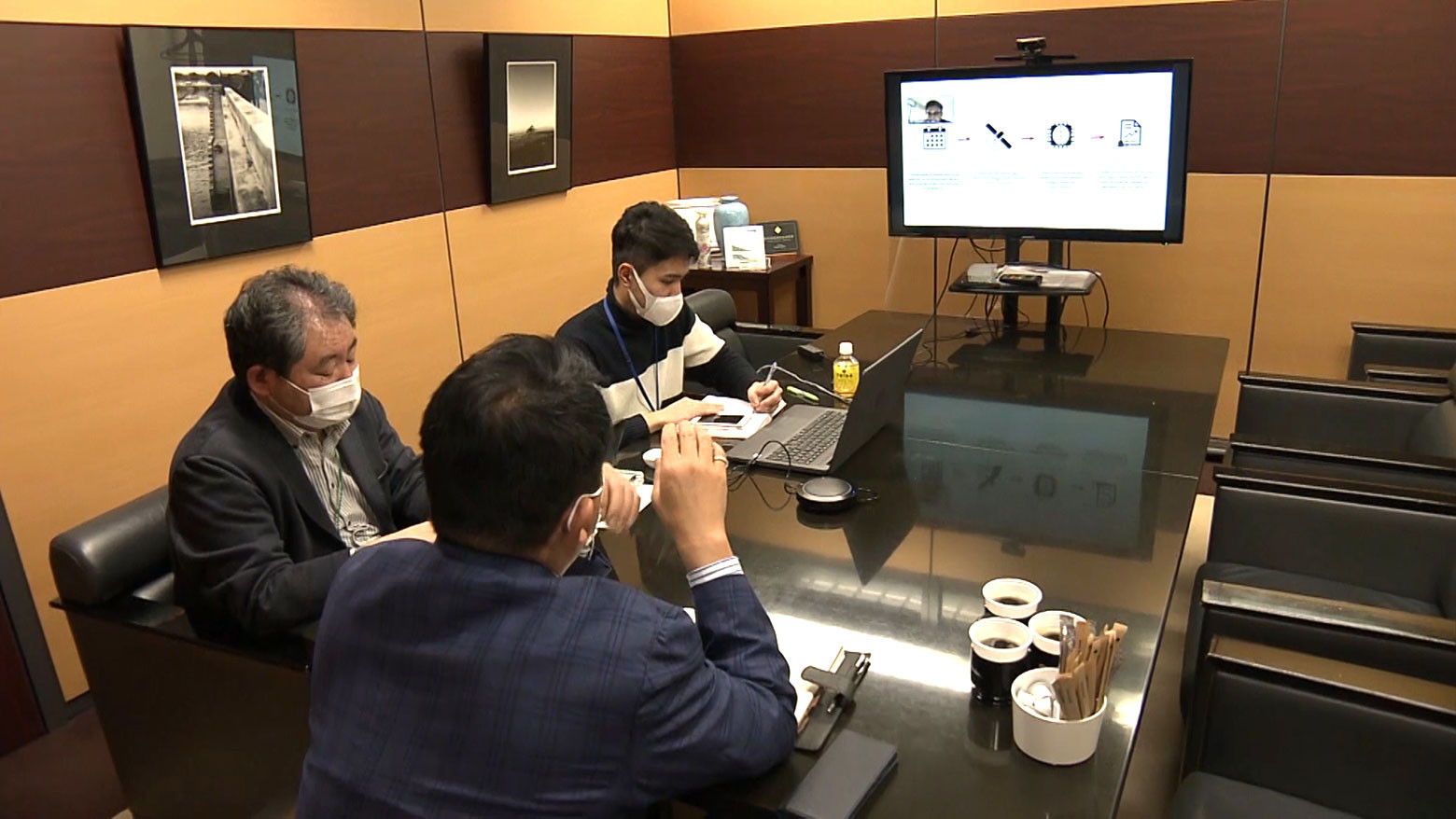The two municipalities run the program alongside the central government and the Japan External Trade Organization, or JETRO.
Sendai City official Arakida Osamu acknowledges there is substantial work to be done. “The next ten years will be about sharing our knowledge learned during the recovery with the world,” he says. “We would like to build a system that fosters cooperation between industry, governments and other groups, to develop the field of disaster prevention and come up with new solutions.”
With the vetting process held online during the pandemic, close to 40 companies from around the world applied, of which nine made the final cut.
From Japan, four big firms joined the program, including tech firm Mitsui Knowledge Industry. Its Sendai office teamed up with a research institute to create a system that can automatically predict damage by analyzing data from earthquake sensors and send reports to building owners.
Mitsui Knowledge Industry hopes to enhance the system by connecting it to social media, so it can analyze photos and videos uploaded by local users in the event of an actual quake. This would help officials more accurately assess damage and find areas that are safe for evacuation.
For this aspect of the project, the company is considering partnering with Qlue, a firm in Indonesia specializing in “smart city” technology that allows people to notify authorities of infrastructure issues. For example, a local resident who sees a pothole and takes a picture can use the system to send it to the relevant authorities.
“Qlue already has smart city services in Indonesia and we have created our own system, so I would like to combine those ideas and strong points to develop new solutions,” says Tando Shoichi of Mitsui Knowledge Industry.
Watch Video 4:06
Small players thinking big
The program is also an opportunity for small local companies to go global. Among them is Sendai-based IT firm Andex, which has ideas based on first-hand experience. Ten years ago, after the Great East Japan Earthquake, company president Mishima Jun spent time in an evacuation center where he found room for improvement.
“When centers needed something and made a request, some received more than they needed,” he says. “At the same time, some centers with 100 people would get supplies for fewer than 10. There was a mismatch.”
To tackle the issue, one idea is to use AI or image-recognition software to show officials where relief supplies are needed in real time with information on headcounts, age and gender.
In a bid to make the idea a reality, the firms met with foreign businesses, including a Thai company that uses similar techniques to show store owners when products should be restocked. The March meeting ended without a deal, but the companies say they’ll keep talking.
“We have experience -- we know real pain and fear,” says Mishima. “We would like to create solutions and share them from Sendai to the world.”
JETRO Regional Investment Division Director Kigawa Mikiko believes the program will help attract more foreign companies to the area. Usually, she says, such firms only look to major cities like Tokyo when expanding their business to Japan.
“The experience here can be a draw for foreign companies,” she says. “There are few cities in the world that have faced such a massive disaster, but it’s something that can happen anywhere.”

